Facility Management Software Market Size
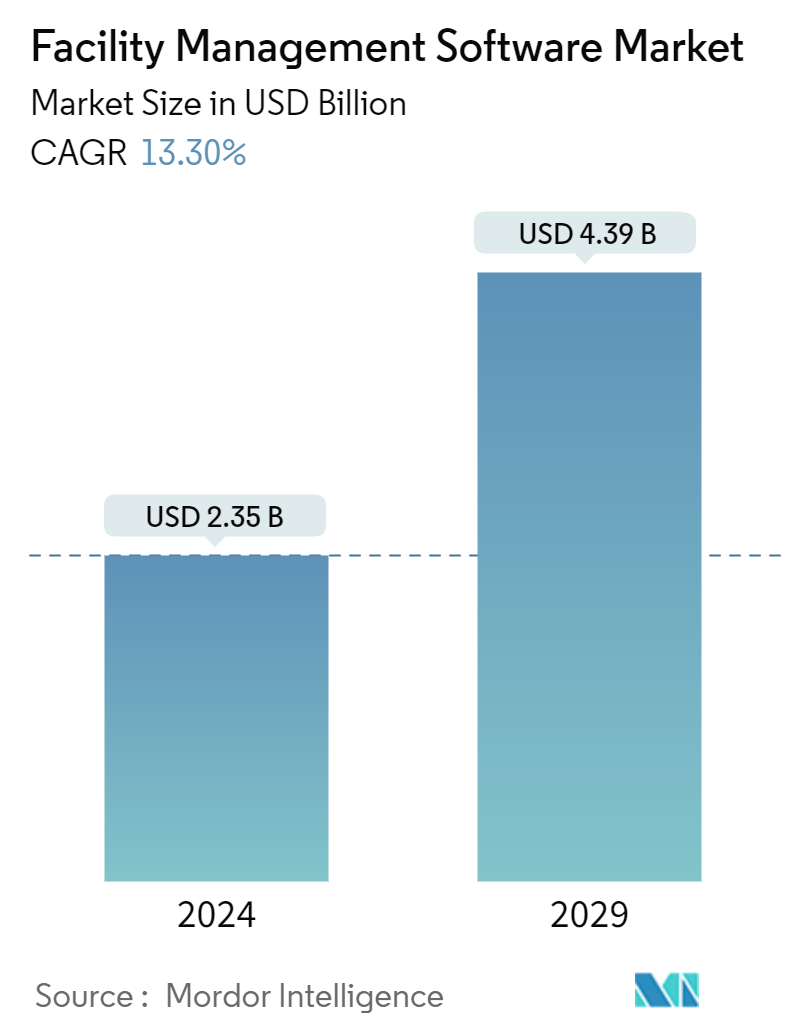
| Study Period | 2019 - 2029 |
| Market Size (2024) | USD 2.35 Billion |
| Market Size (2029) | USD 4.39 Billion |
| CAGR (2024 - 2029) | 13.30 % |
| Fastest Growing Market | Asia Pacific |
| Largest Market | Asia Pacific |
Major Players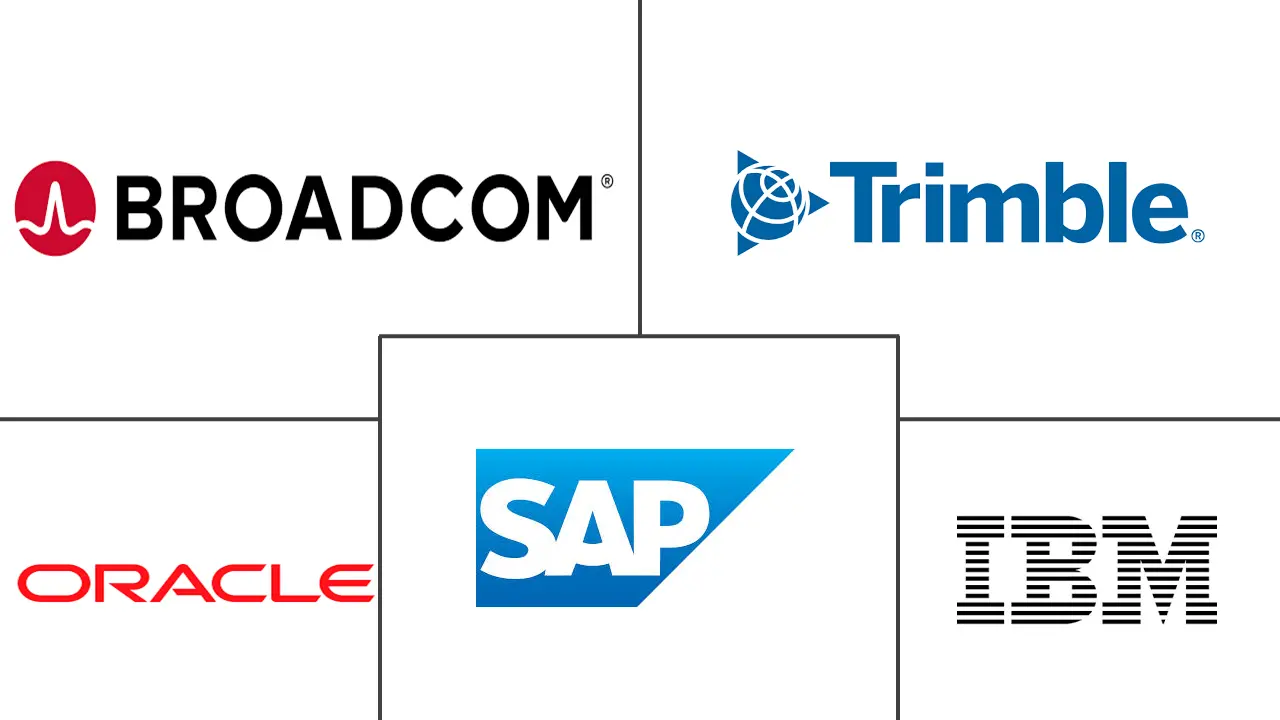
*Disclaimer: Major Players sorted in no particular order |
Need a report that reflects how COVID-19 has impacted this market and its growth?
Facility Management Software Market Analysis
The Facility Management Software Market size is estimated at USD 2.35 billion in 2024, and is expected to reach USD 4.39 billion by 2029, growing at a CAGR of 13.30% during the forecast period (2024-2029).
Facility management consists of multiple factors that influence the productivity and efficiency of organizations. The new management system standard, conforming with the best industry practices, constitutes a benchmark for developing and driving effective strategic, tactical, and operational FM principles globally.
- Facility managers can use computer-aided facility management (CAFM) software to organize, carry out, and keep track of all maintenance tasks, such as reactive and planned preventative maintenance, space and move management, asset management, operational facility services, room reservations, and other client services. CAFM holds a significant portion of the facility management software market.
- The demand for CAFM is expected to grow during the forecast period as large enterprises regularly implement CAFM services and software to manage assets, spaces, buildings, and properties. Infrastructure development, including building railways, ports, and airports, is a priority for governments in several nations. With this, the need for CAFM software has grown because the government works more closely with service providers that help keep infrastructure clean and green.
- Infrastructure development, including building railways, ports, and airports, is a priority for governments in several different nations. With this, the need for CAFM software has grown because the government works more closely with service providers that help keep infrastructure clean and green. At present, end users are getting various options due to cloud computing technology, which combines software and service configurability and computing mobility.
- Due to this, sharing data between businesses is now more successful because it ensures that everyone in the company can use applications and services. The key players in the market regularly invest in developing customized CAFM solutions according to business demand. As a result, software companies are investing heavily in research and development to broaden their offerings through advanced technology.
- The lack of proper integration with existing workflows can hinder the facility management software market by causing inefficiencies, data silos, and resistance to adoption among users. When software does not seamlessly fit into existing processes, it can disrupt operations and decrease overall productivity. Integration challenges may also deter potential buyers who prioritize compatibility and ease of implementation.
- There is a greater need for business goods and services during economic expansion. Due to this increase in activity, businesses frequently invest in technology like facility management software that can increase productivity and operational efficiency. The goal is to streamline operations, cut expenses, and put the company in a position for long-term success.
Facility Management Software Market Trends
Commercial Sector to Witness Significant Growth
- The commercial entities include office buildings constructed or occupied by businesses or enterprises, such as manufacturers' offices, IT and telecommunication, and other service providers. Owing to the increasing establishment of commercial buildings across the globe, facility management has gained significant importance, driving the growth of the FM software market.
- Commercial spaces require property accounting, renting, contract management, procurement management, and other services, so effective facility management software becomes necessary. Therefore, the commercial category is witnessing exponential growth opportunities in the market, and the trend is likely to continue throughout the forecast period.
- By type, Computer-Aided Facility Management (CAFM) is anticipated to grow significantly. Computer-Aided Facility Management (CAFM) software enables facility managers to plan, execute, and monitor preventative maintenance, space management, asset management, operational facility services, and other customer services. Growing demands for space planning and management, leasing and real estate management, capital project management, asset management, energy performance analysis, maintenance management, physical building administration, and space reservations will likely increase the adoption of CAFM software in the commercial segment.
- In March 2024, MDS Critical Facilities Services, a service provider for critical infrastructure, partnered with property operations software firm Facilio to implement their cloud-based Connected CaFM solution to optimize and streamline its data center operations. Facilio's Connected CaFM solution enhances efficiency, responsiveness, and overall performance, offering a scalable architecture that aligns with CFS's growing needs. The company's AI-driven platform allows commercial sector end users to aggregate data, optimize performance, and control portfolio operations from a single place.
- The Middle East and African region is witnessing a significant adoption of FM software. Integrated FM service providers such as CIT Group in Saudi Arabia, Quality Facility Management (QFM) in Dubai, and others have adopted Connected CaFM as their FM platform for centralized management of in-house and contracted operations, providing complete visibility, control, and increased value.
- The rise in the global IT and telecom industry will enable commercial facility management software expansion. For instance, the telecom players focus on 5G deployments, creating significant opportunities for the region's facilities management sector. Moreover, according to Ericsson, the global 5G population is expected to be 85% by 2029. For example, increased partnerships and collaborations enable building inspection, maintenance, and repair of ventilation, air conditioning, electrical, heating, sanitary systems, instrumentation, and control technology. This will allow the market players to establish a strong position in the market and expand the customer base.
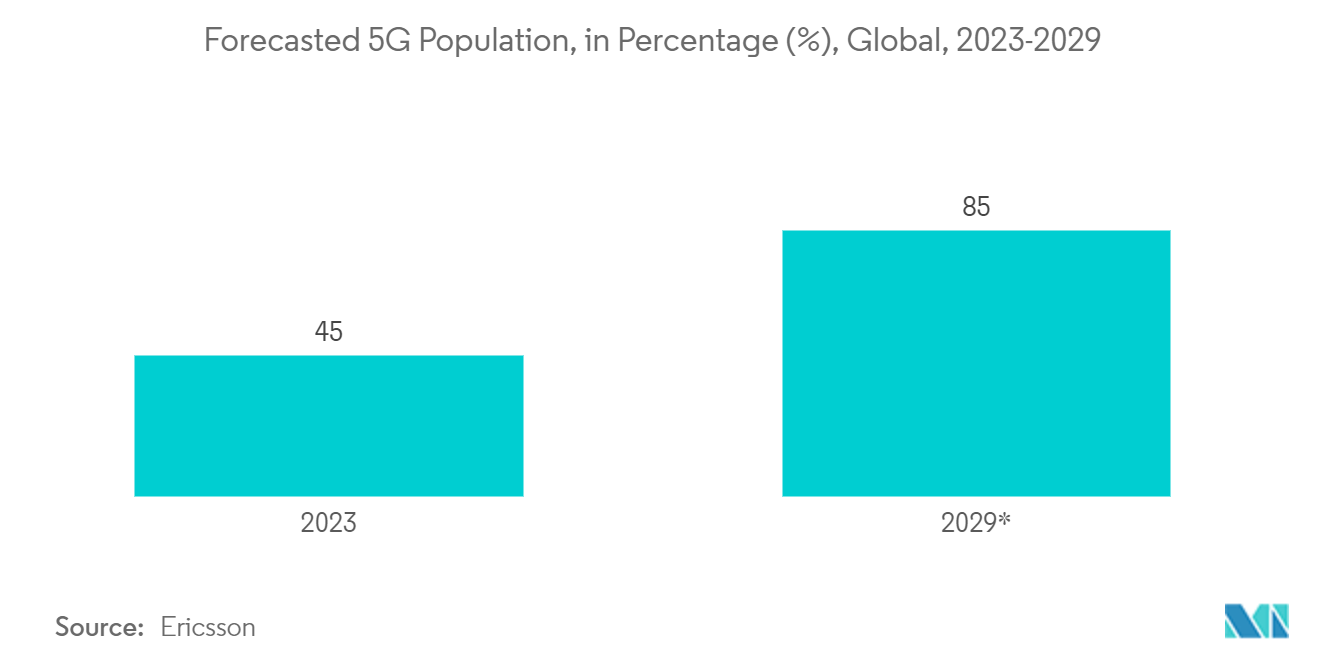
Asia-Pacific Expected to Register Significant Growth
- Numerous trends may propel the facility management software market in Asia-Pacific. For example, the Internet of Things (IoT) refers to physical equipment and sensors that use the Internet to connect with FM teams. They produce performance data that alerts facility managers to potential problems. FM software can monitor and control the processes from any location. It uses IoT to deliver real-time insights into its operations.
- IoT paired with FM software, such as a computerized maintenance management system (CMMS), identifies problems (e.g., uncomfortable office temperatures), inevitably prepares and dispenses work orders without human intervention, and tracks their execution.
- The advent of smart cities and smart buildings in the developing countries in the region is fueling the overall demand for facility management software, which has encouraged the market players in the region to launch new products and services.
- For instance, Telit Cinterion, a global IoT enabler company with critical operations in India, also provides IoT modules, edge-to-cloud services, IoT embedded software, and analytics for facility management software applications. Moreover, the company's services deliver functions like energy usage management and sanitation, which are manual operations in traditional building management. Smart facility solutions automate these processes by combining sensor input and machine learning with connectivity and analytics. With IoT-based facilities management, these functions can be prescheduled and adjusted for maximum efficiency.
- The increase in construction activities and the expansion of residential buildings would contribute to the growth of the Indian facility management software market.
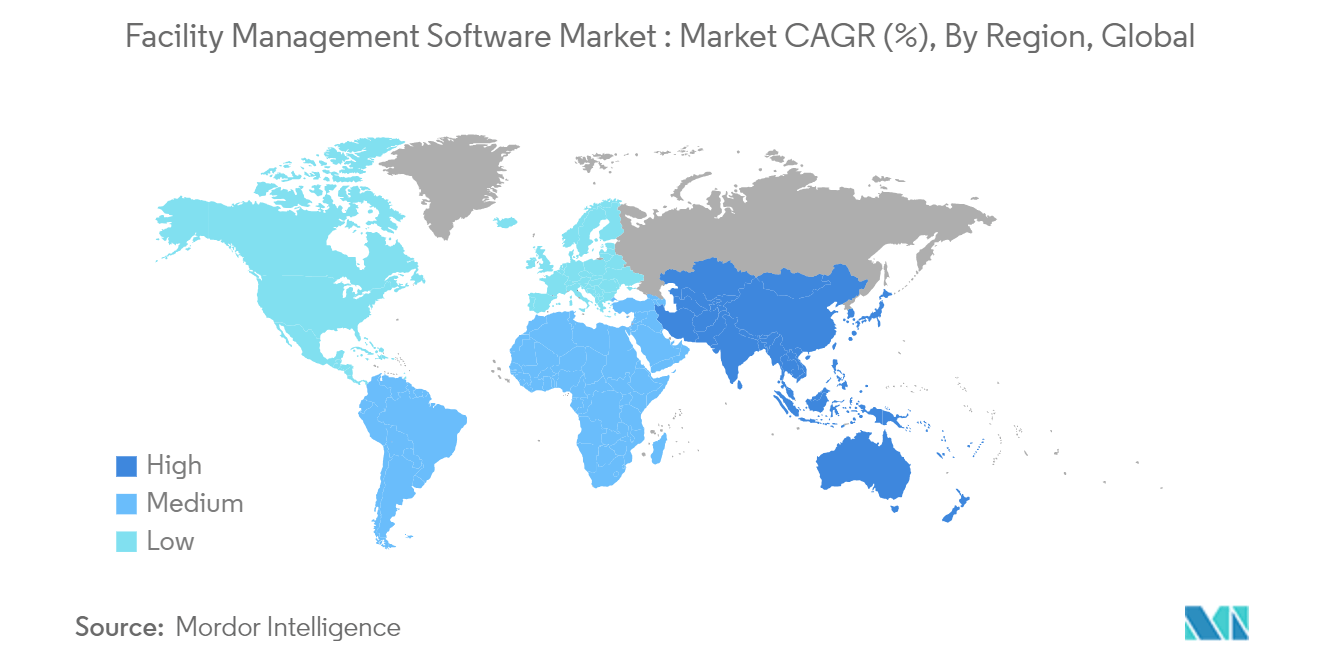
Facility Management Software Industry Overview
The facility management software market is fragmented, with local and international players having decades of industry experience. The facility vendors are incorporating a powerful competitive strategy by leveraging their expertise. Facility software companies are incorporating technologies into their services, strengthening their service portfolio. The major players are IBM Corporation, Broadcom, Oracle Corporation, SAP SE, and Trimble Inc.
- In March 2024, MDS Critical Facilities Services, a service provider for critical infrastructure, partnered with property operations software firm Facilio to implement their cloud-based Connected CaFM solution to optimize and streamline its data center operations. Facilio's Connected CaFM solution enhances efficiency, responsiveness, and overall performance, offering a scalable architecture that aligns with CFS's growing needs. The company's AI-driven platform allows commercial sector end users to aggregate data, optimize performance, and control portfolio operations from a single place.
- In November 2023, Deloitte announced that the company collaborated with IBM to help clients accelerate emissions reduction strategies and make sustainability programs an embedded part of their organization's core business. It will also help monitor performance targets and decarbonization programs, which are integrated with other products from IBM's suite of Sustainability Software solutions, IBM Maximo Application Suite, for asset monitoring, management, predictive maintenance, and reliability planning.
Facility Management Software Market Leaders
IBM Corporation
Broadcom
Oracle Corporation
SAP SE
Trimble Inc.
*Disclaimer: Major Players sorted in no particular order
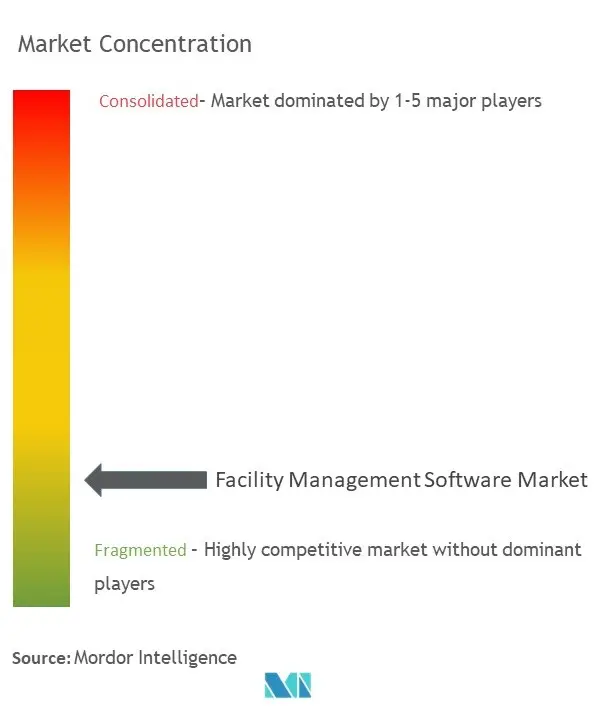
Facility Management Software Market News
- March 2024 - Optima, the company’s third-generation computer-aided facility management (CAFM) system, was released by Auberon Technologies, a trailblazing provider of software-as-a-service (SaaS) solutions that enhance facility management. Advanced artificial intelligence (AI) technology will be leveraged by Optima to bring productivity and insight, surpassing the capabilities of its predecessor, AuberonSpace, a software that set industry standards more than 10 years ago.
- October 2023 - TMA Systems, a topnotch provider of progressive Computerized Maintenance Management Systems (CMMS), Calibration Management Software (CMS), and Enterprise Asset Management (EAM), announced the readiness of the freshly upgraded Eagle CMMS, which is a transformational CMMS platform intended for businesses of all sizes demanding robust asset maintenance in addition to management solution. While very influential, Eagle CMMS provides simplicity in ease of use and ease of adoption, which fast-tracks time to value.
Facility Management Software Market Report - Table of Contents
1. INTRODUCTION
1.1 Study Assumptions and Market Definition
1.2 Scope of the Study
2. RESEARCH METHODOLOGY
3. EXECUTIVE SUMMARY
4. MARKET INSIGHTS
4.1 Market Overview
4.2 Industry Attractiveness - Porter's Five Forces Analysis
4.2.1 Bargaining Power of Suppliers
4.2.2 Bargaining Power of Buyers
4.2.3 Threat of New Entrants
4.2.4 Threat of Substitute Products
4.2.5 Intensity of Competitive Rivalry
4.3 Assessment of the Impact of Macroeconomic Factors on the Market
5. MARKET DYNAMICS
5.1 Market Drivers
5.1.1 High Demand for CAFM Solutions
5.1.2 Rising Use of AI and IoT in Facility Management Software
5.2 Market Restraints
5.2.1 Lack of Proper Integration with the Workflow
6. MARKET SEGMENTATION
6.1 By Type
6.1.1 Computer Aided Facility Management (CAFM)
6.1.2 Integrated Workplace Management Systems (IWMS)
6.1.3 Computerized Maintenance Management Systems (CMMS)
6.2 By End User
6.2.1 Commercial
6.2.2 Institutional
6.2.3 Public Infrastructure
6.2.4 Industrial
6.2.5 Other End Users
6.3 By Geography***
6.3.1 North America
6.3.2 Europe
6.3.3 Asia-Pacific
6.3.4 Australia and New Zealand
6.3.5 Latin America
6.3.6 Middle East and Africa
7. COMPETITIVE LANDSCAPE
7.1 Company Profiles*
7.1.1 IBM Corporation
7.1.2 Broadcom
7.1.3 Oracle Corporation
7.1.4 SAP SE
7.1.5 Trimble Inc.
7.1.6 Upkeep Maintenance Management
7.1.7 Accruent LLC (Fortive Corporation)
7.1.8 Planon Software Services Private Limited
7.1.9 FTMaintenance (FasTrak SoftWorks Inc.)
7.1.10 Eptura
8. INVESTMENT ANALYSIS
9. MARKET OPPORTUNITIES AND FUTURE TRENDS
Facility Management Software Industry Segmentation
Facility management software aids any organization in handling all repair and maintenance activities using facility management software via an online platform. The program was created to enable businesses to manage buildings more effectively while saving time and money.
The facility management software market is segmented by type (computer-aided facility management (CAFM), integrated workplace management systems (IWMS), and computerized maintenance management systems (CMMS)), end user (commercial, institutional, public/infrastructure, industrial), and geography (North America, Europe, Asia Pacific, Latin America, Middle East and Africa). The market size and forecasts are provided in terms of value (USD) for all the above segments.
| By Type | |
| Computer Aided Facility Management (CAFM) | |
| Integrated Workplace Management Systems (IWMS) | |
| Computerized Maintenance Management Systems (CMMS) |
| By End User | |
| Commercial | |
| Institutional | |
| Public Infrastructure | |
| Industrial | |
| Other End Users |
| By Geography*** | |
| North America | |
| Europe | |
| Asia-Pacific | |
| Australia and New Zealand | |
| Latin America | |
| Middle East and Africa |
Facility Management Software Market Research FAQs
How big is the Facility Management Software Market?
The Facility Management Software Market size is expected to reach USD 2.35 billion in 2024 and grow at a CAGR of 13.30% to reach USD 4.39 billion by 2029.
What is the current Facility Management Software Market size?
In 2024, the Facility Management Software Market size is expected to reach USD 2.35 billion.
Who are the key players in Facility Management Software Market?
IBM Corporation, Broadcom, Oracle Corporation, SAP SE and Trimble Inc. are the major companies operating in the Facility Management Software Market.
Which is the fastest growing region in Facility Management Software Market?
Asia Pacific is estimated to grow at the highest CAGR over the forecast period (2024-2029).
Which region has the biggest share in Facility Management Software Market?
In 2024, the Asia Pacific accounts for the largest market share in Facility Management Software Market.
What years does this Facility Management Software Market cover, and what was the market size in 2023?
In 2023, the Facility Management Software Market size was estimated at USD 2.04 billion. The report covers the Facility Management Software Market historical market size for years: 2019, 2020, 2021, 2022 and 2023. The report also forecasts the Facility Management Software Market size for years: 2024, 2025, 2026, 2027, 2028 and 2029.
Facility Management Software Industry Report
Statistics for the 2024 Facility Management Software market share, size and revenue growth rate, created by Mordor Intelligence™ Industry Reports. Facility Management Software analysis includes a market forecast outlook to 2029 and historical overview. Get a sample of this industry analysis as a free report PDF download.
